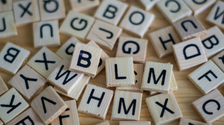I have been wondering about Kanji for a while, and the ways in which it reflects the similarities between Japanese and Chinese written language. For example, in Japanese if you want to write "tree" (ki), that's "wood" (mu) in Chinese. So, my question is: what is the true difference between Kanji and Chinese, and why is it so often that the same sign can have similar, but not the same meaning?
Japanese characters extracted from Chinese traditional characters during Tung Dynasty . That is why you can read it by guessing while it is not often equivalent .
was adopted as the first writing system in the 5th-7th centuries AD (about 1500-1300 years ago), when there was no writing system but of course a fully developed language; it was shoe-horned into the existing language, on a one-one basis, or new words were given approximately similar sounds - so the sounds are totally different or occasionally similar, and the meanings are often identical but sometimes not quite. There was no 'science' to the adoption, and what is more, some Chinese characters have multiple meanings and uses.
Thank you very much, 二枚目先生 and kuu3, your feedback was excellent! Just a follow-up question, then: would it be plausible, that if you can read Kanji perfectly, you could more or less understand Chinese (written) language?
I think Kanji and Chinese are almost same.As other person said , Kanji is from Ancient Chinese and changed the meaning sometimes. For example , "娘" means Daughter in Japanese , on the other hand, means woman in Chinese. However , 90% of kanji and Chinese has same meaning.
kanji is formed from ancient chinese but chinese don't retain ancient meaning




